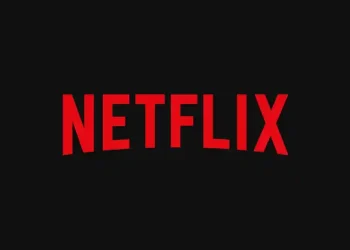UnitedHealth reports Q2 earnings miss and cuts 2025 outlook amid soaring medical costs
Written July 29, 2025, 14:45 EDT
UnitedHealth Group Inc., one of the largest health care and insurance providers in the U.S., reported weaker-than-expected earnings for the second quarter of 2025 and released a cautious outlook for the coming year. The company pointed to surging medical expenses and ongoing industry-wide cost pressures as key factors driving its underperformance and lowered guidance.
Second-quarter earnings fall short of Wall Street expectations
In its Q2 financial report released Tuesday, UnitedHealth said it earned $4.08 per share in adjusted earnings on $111.6 billion in revenue. Analysts surveyed by FactSet had projected higher earnings of $4.48 per share, although revenue came in slightly above expectations.
While revenue rose 13% year-over-year, net profit dropped 19% to $3.41 billion, largely due to a sharp increase in health care costs. UnitedHealth reported a 20% surge in medical expenses, totaling $78.6 billion—its largest category of spending.
This performance has reinforced investor concerns about the growing pressure on health insurers as medical costs rise faster than premium adjustments can keep pace.
Medical costs climb across the insurance industry
The earnings disappointment from UnitedHealth follows a trend among major U.S. health insurers. Rivals such as Elevance Health Inc. and Centene Corp. have also revised their annual forecasts downward in response to similar challenges, citing unexpected increases in costs related to emergency care, behavioral health services, and cutting-edge treatments like gene therapies and oncology medications.
UnitedHealth’s executives acknowledged that the company miscalculated the rate at which care activity would rebound following pandemic-related slowdowns.
“We underestimated care activity and cost trends,” said Chairman and acting CEO Stephen Hemsley. “While these pressures remain, we are implementing corrective actions and expect stabilization over the longer term.”
2025 outlook cut sharply, long-term growth expected in 2026
UnitedHealth had originally forecasted adjusted earnings of up to $30 per share for 2025, but withdrew that guidance in May following cost concerns and leadership changes. In Tuesday’s update, the company issued a new, more conservative outlook of at least $16 per share in adjusted earnings for 2025—almost half the original expectation.
Analysts, by comparison, are currently forecasting $20.64 per share for the full year, according to FactSet.
Despite this downward revision, UnitedHealth remains optimistic about longer-term performance. The company stated that it anticipates a return to earnings growth by 2026, assuming cost-control efforts and operational improvements take effect.
Leadership changes and earlier stock shock
The company’s financial troubles have been accompanied by executive upheaval. In May, CEO Andrew Witty abruptly stepped down, triggering uncertainty across the industry. He was replaced by Stephen Hemsley, UnitedHealth’s former long-time CEO who now holds both the Chairman and acting CEO roles.
In April, UnitedHealth had already taken the unusual step of cutting its forecast mid-year, which triggered a dramatic one-day decline in its share price—dropping $130 in a single session, the company’s worst performance in over 25 years.
UnitedHealth stock under pressure in 2025
Investor reaction to the Q2 report was swift. UnitedHealth shares fell more than 3%, trading at around $272.30 before Tuesday’s market open.
This marks a dramatic downturn from the company’s all-time high of over $630 per share reached in November 2024. Since then, shares have plummeted 44% year-to-date, reflecting both investor concern and broader market reactions to developments within the company.
For comparison, the Dow Jones Industrial Average, of which UnitedHealth is a component, has gained 5% over the same period—highlighting the company’s divergence from the broader market trend.
The stock’s decline also follows the December 2024 fatal shooting of UnitedHealthcare CEO Brian Thompson in midtown Manhattan, which occurred just hours before the company’s annual investor meeting. While not directly tied to financial performance, the incident marked a period of turbulence and instability for the insurer.
Optum remains a key growth driver
UnitedHealth continues to lean on its Optum division, which includes pharmacy benefit management (PBM), health care delivery, and technology services. The unit has shown steady revenue growth and remains central to the company’s long-term strategy.
Despite current headwinds, executives say Optum’s integration of technology and data-driven care models positions the company to adapt to rising medical costs more efficiently than competitors.
Still, the company faces an uphill battle in regaining investor confidence, particularly if costs continue to rise faster than expected or reimbursement models fail to adjust accordingly.
Industry-wide implications and regulatory outlook
UnitedHealth’s latest results come amid growing scrutiny of health insurance profitability and coverage adequacy in the U.S. Lawmakers and consumer advocates have raised concerns over whether private insurers are prepared to manage increasing demand for behavioral health services, expensive specialty drugs, and the rising prevalence of chronic illnesses.
Additionally, regulatory reforms aimed at increasing pricing transparency and simplifying prior authorization processes may further impact margins in the coming years.
Looking ahead
Despite a weak earnings quarter and a downgraded forecast, UnitedHealth insists that its long-term fundamentals remain strong. Leadership has promised continued investment in care quality, efficiency improvements, and cost containment strategies.
“We are taking prudent steps to stabilize performance,” said Hemsley. “The actions underway will help ensure long-term resilience in a complex health care landscape.”
Investors, however, may continue to tread cautiously as the company works through its cost challenges and leadership transition.
This article was rewritten by JournosNews.com based on verified reporting from trusted sources. The content has been independently reviewed, fact-checked, and edited for accuracy, neutrality, tone, and global readability in accordance with Google News and AdSense standards.
All opinions, quotes, or statements from contributors, experts, or sourced organizations do not necessarily reflect the views of JournosNews.com. JournosNews.com maintains full editorial independence from any external funders, sponsors, or organizations.
Stay informed with JournosNews.com — your trusted source for verified global reporting and in-depth analysis. Follow us on Google News, BlueSky, and X for real-time updates.














